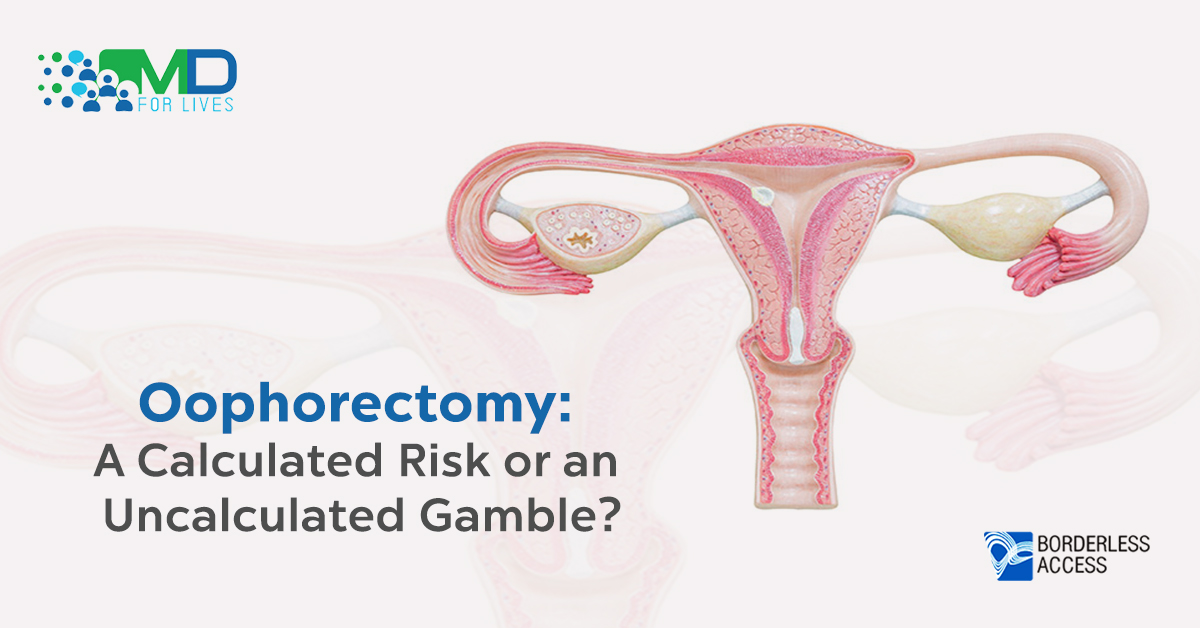For women undergoing hysterectomy, it is a norm that her ovaries are also removed as a prophylactic measure because the cancers of the breast or endometrium are generally caused due to alterations in hormones secreted by the ovaries. However, a recent study (1) led by Richard Lilford, Professor of Obstetrics and Gynaecology and Chair in Public Health at the University of Warwick’s suggests that complete removal of ovaries during hysterectomy can increase the risk of suffering from heart disease, cancer, and premature death.
The aim of this study was to compare the outcome between women who were treated for benign tumors and had both ovaries removed and those who had one or none of the ovaries removed. For this study, 113,679 cases of women falling in the age group of 35-45 years during the period April 2004 to March 2014 were studied. (1) Of these patients, a total of 37,098 had both the ovaries removed, i.e., around one third of the total patients. It was seen that the rate of admission for ischemic heart disease was 1.60% in the ovarian conservation group compared with 2.02% in the bilateral removal group. This gives an absolute rate difference of 0.42%. The median time to event was 56 months for the ovarian conservation group patients and 51 months for the bilateral removal group. (1) Moreover, the study showed that the rate of admission with any cancer diagnosis was lower in the ovarian conservation group (2.80%) than in the bilateral removal group (3.49%), with an absolute rate difference of 0.69%. Furthermore, an immediate rise was seen in cases of ovarian cancer when both ovaries were removed (0.29% vs. 0.07%; P < 0.001), with an absolute rate difference of 0.22%. The median time to ovarian cancer diagnosis was 4 months in the bilateral removal group compared with 54 months in the ovarian conservation group. (1)
On an average, 1.01% of patients were diagnosed with breast cancer after their hysterectomy, but this rate was slightly higher in the ovarian conservation group: 1.02% vs. 0.97% in the bilateral removal group. The median time to event was 57.5 months for the ovarian conservation group and 51 months for the bilateral removal group. (1) Altogether it was seen that the admission rates for cancers of the lung and bladder were significantly low in the ovarian conservation group, and it was very low for colon and other cancers. (1)
Overall, the death rate was lower in the ovarian tissue conserved group than in the bilateral removal group (0.60% vs. 1.01%), with an absolute rate difference of 0.41%. In the ovarian conservation group, 13.4% deaths occurred within the first 12 months of hysterectomy compared with 17.3% in the bilateral removal group. If deaths due to ovarian cancer are excluded, than it would be extremely favorable to conserve ovarian tissue. (1)
It can be concluded that women who had one or no ovaries removed were less likely to develop ischemic heart disease or cancer after hysterectomy than those who had both (bilateral) ovaries removed. However, researchers believe that all premenopausal women should be advised that the probable benefit of averting ovarian cancer comes with an increased risk of cardiovascular disease, other cancers, and an increased mortality.
Credit: Dr. Rachita on behalf of Borderless Access
Copyright © 2016 BorderlessAccess
Reference:





